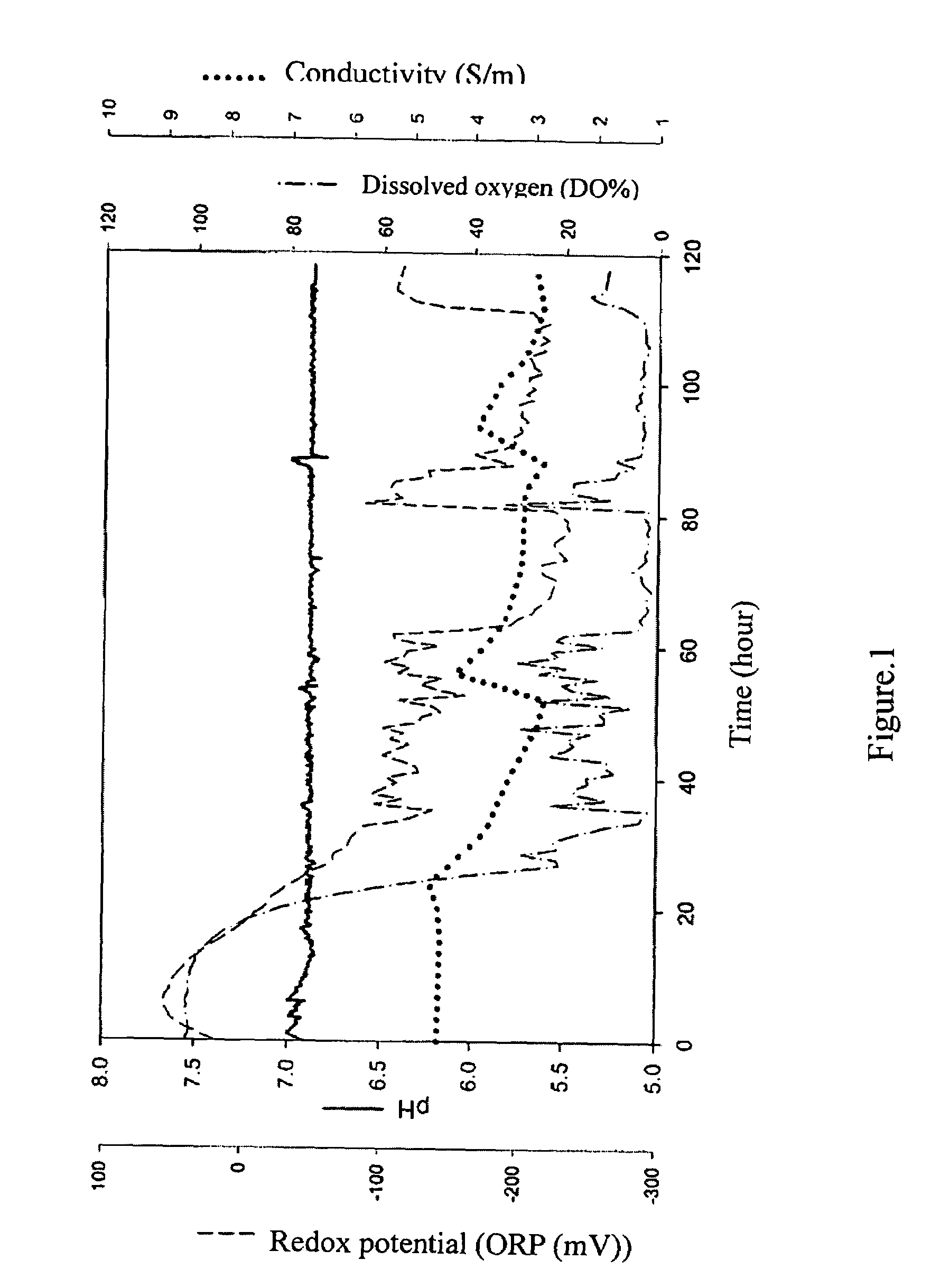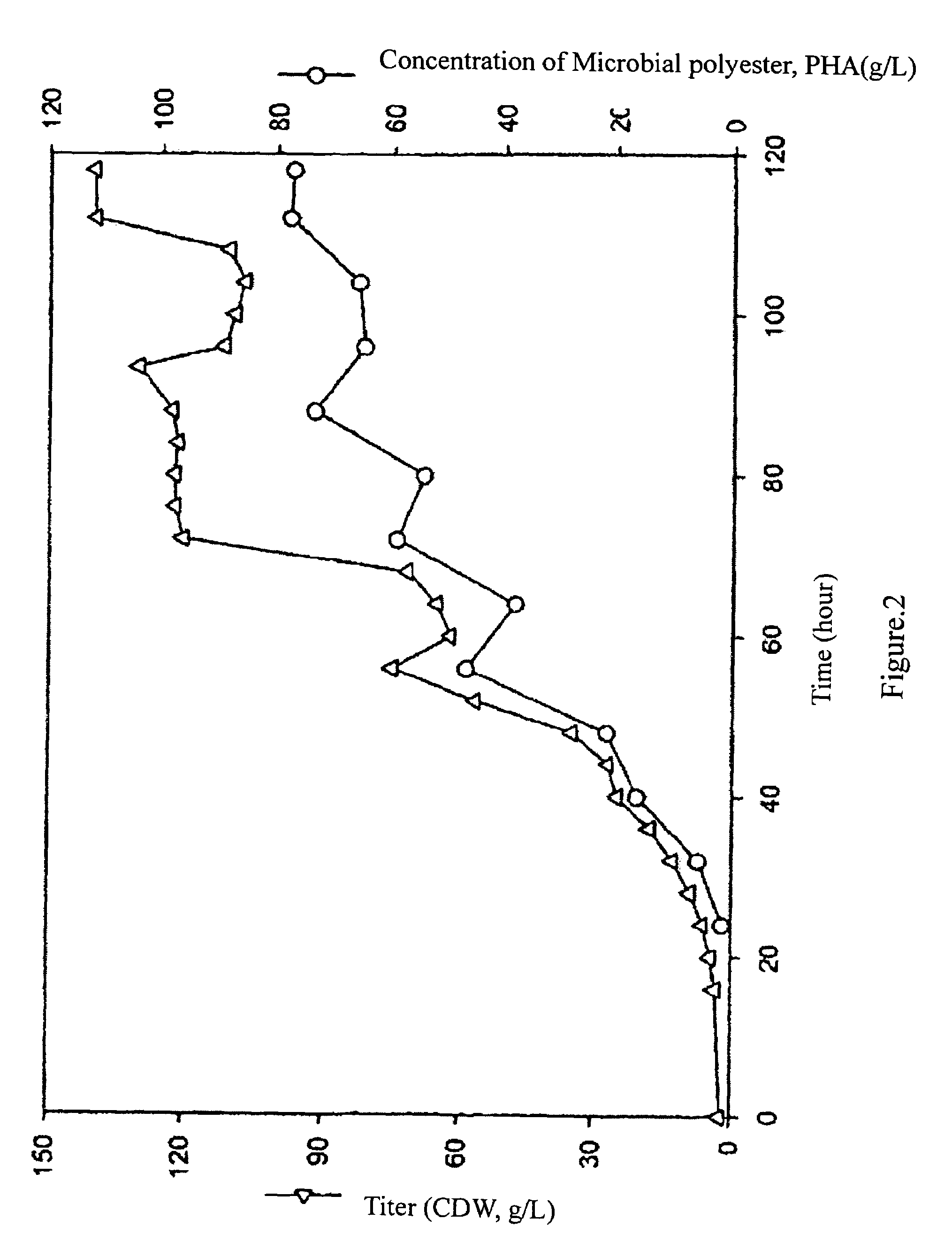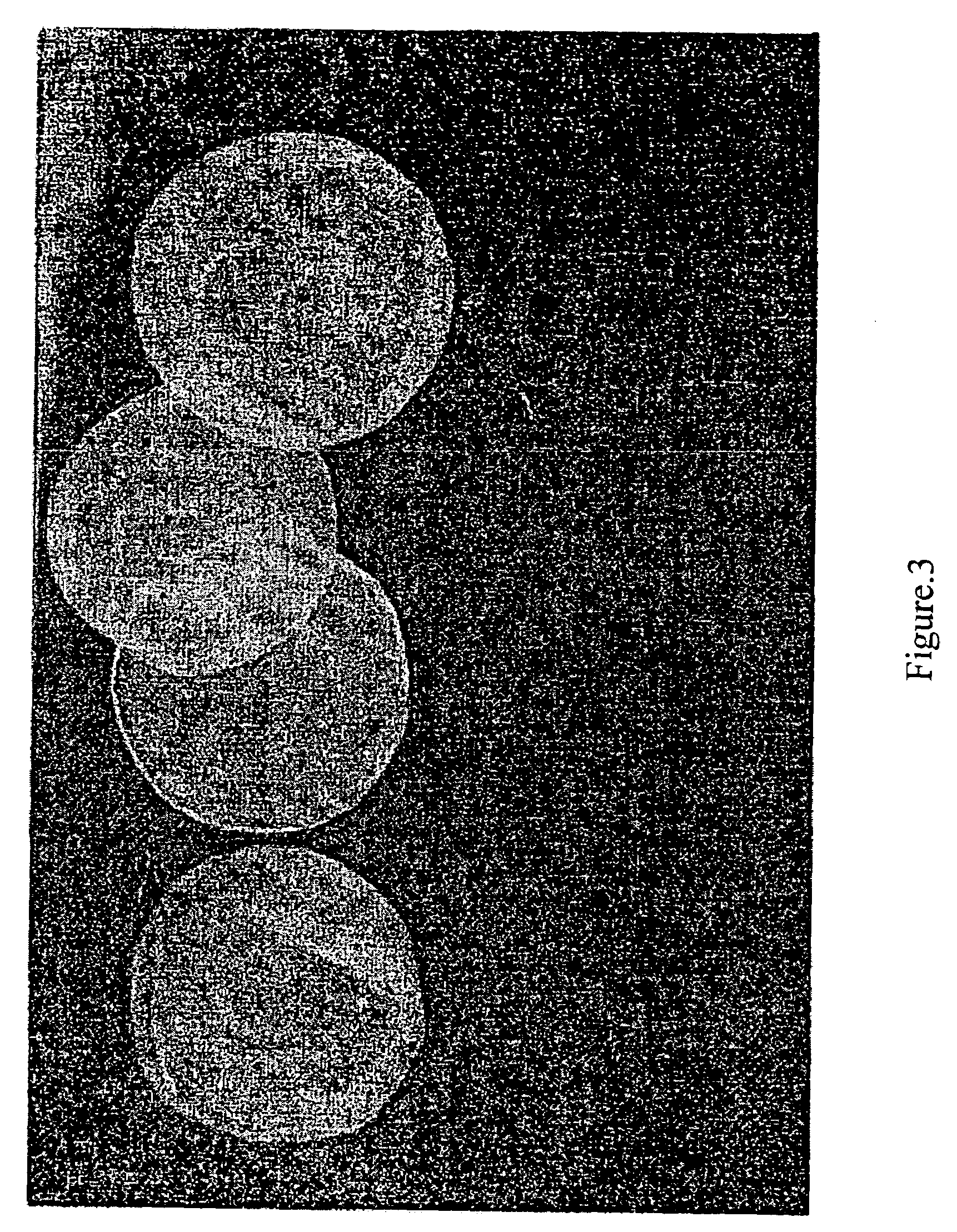Method for producing biodegradable polyester
a biodegradable, polyester technology, applied in the direction of fermentation, etc., can solve the problems of preventing further use, high production cost, and inability to use continuous fermentation, and achieve the effect of concentrating and producing efficiency of microbial polyester products and large-scale production
- Summary
- Abstract
- Description
- Claims
- Application Information
AI Technical Summary
Benefits of technology
Problems solved by technology
Method used
Image
Examples
example 1
[0018]The fermentation broth having contents comprising: sodium chloride 234 g / l, sodium bicarbonate 0.2 g / l, sodium bromide 0.5 g / l, magnesium sulfate 30 g / l, magnesium chloride 19.5 g / l, calcium chloride 1 g / l, potassium chloride 5 g / l, yeast extract 7.5 g / l is prepared, and has added thereto an extruded starch mixture (containing weight ratio of rice bran and corn starch of 1:8) serving as a carbon source, resulting in a starting broth.
[0019]Haloferax mediterranei is cultivated in a 250 ml culture; after 36 hours, the culture liquid is inoculated in a 5 L fermentation tank (CMBS Model CMF-5, FIRSTEK, Taiwan) containing 2.5 L starting broth and fermented for 118 hours. The 5 L fermentation tank is equipped with a pH regulator (Suntex PC330, Ingold pH electrode), which is used to proceed with pH-stat feeding control, and a DO controller responsible for controlling dissolved oxygen. During the initial stages of fermentation, air is delivered into the tank by an air pump at a flow ra...
example 2
[0026]Extruded corn starch was used as the carbon source in the example, and the steps of fermentation were roughly the same as those of Example 1. Time needed for the entire fermentation process was 88 hours in total.
[0027]Conductivity was reduced to 3 S / m at 40th and 73.5th hour in the course of fermentation, and then salts were added to make conductivity increase to 4 S / m.
[0028]During the first 16 hours of fermentation, the titer did not vary significantly. However, the bacteria population entered a log phase during 16-40 hours of fermentation, so the titer rose from 5 g / L to 32 g / L. The feeding reactive materials comprise extruded cornstarch 50 g / L and yeast extract 85 g / L. Reactive materials were fed at 11.5th hour, and the volume reached the 4.5 L upper limit. Therefore, 2 L fermentation liquid was taken out and the salts were added to the remaining fermentation liquid depending on the changes in conductivity. Because the environment of fermentation had been altered, the titer...
examples 3 and 4
[0031]Fermentation was conducted according to the procedures in Example 1, except that the carbon source was changed. The carbon source of Example 3 was extruded wheat bran and cornstarch (1:2), and the carbon source of Example 4 was solely glucose. The experimental results of Examples 1 to 4 are illustrated in Table 1.
[0032]Table 1 shows titers and concentrations of microbial polyester after fermentation using different carbon sources.
[0033]
Weight percentageMicrobialof microbialMaximumpolyesterpolyester totiterconcentrationbacteria bodyCarbon source(g / L)(g / L)(wt %)Extruded rice bran140.07855.7and cornstarch(Example 1)Extruded corn62.624.238.7starch(Example 2)Extruded wheat131.052.740.2bran andcornstarch(Example 3)Glucose85.823.026.8(Example 4)
[0034]From the above results, it is concluded that using the method of the present invention and employing extruded agricultural materials as the carbon sources to produce microbial polyester result in higher production than that of prior arts...
PUM
| Property | Measurement | Unit |
|---|---|---|
| temperature | aaaaa | aaaaa |
| conductivity | aaaaa | aaaaa |
| conductivity | aaaaa | aaaaa |
Abstract
Description
Claims
Application Information
 Login to View More
Login to View More - R&D
- Intellectual Property
- Life Sciences
- Materials
- Tech Scout
- Unparalleled Data Quality
- Higher Quality Content
- 60% Fewer Hallucinations
Browse by: Latest US Patents, China's latest patents, Technical Efficacy Thesaurus, Application Domain, Technology Topic, Popular Technical Reports.
© 2025 PatSnap. All rights reserved.Legal|Privacy policy|Modern Slavery Act Transparency Statement|Sitemap|About US| Contact US: help@patsnap.com



